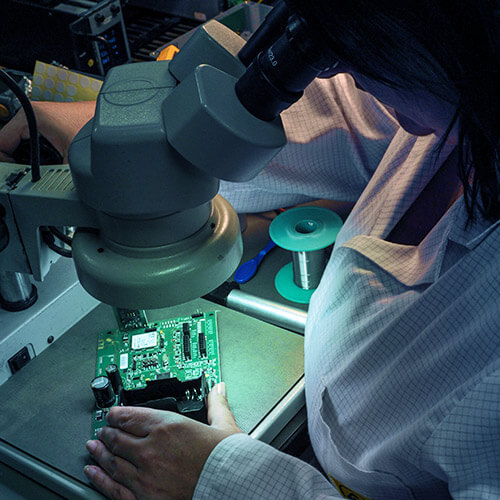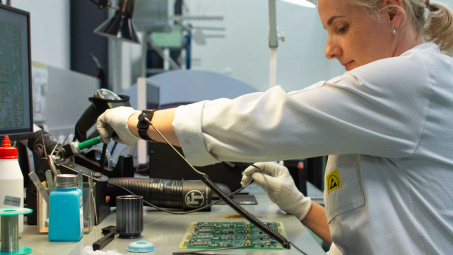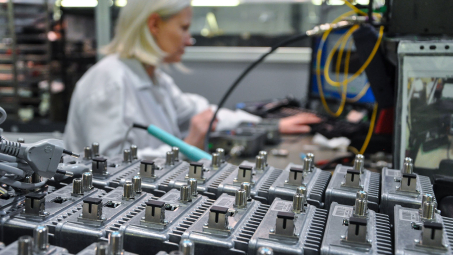A Guide to Engineering Change Order (ECO)
Change is driven by innovation. A significant number of changes take place every day in fast-paced sectors like the industrial Internet-of-Things (IoT) industry and the high-tech world. No product ever reaches the market without undergoing quite a few design changes along the road, and even products that have already hit the market will probably require regular updates.
Successful manufacturers invest time and resources into creating an engineering change management process. Those companies are capable of reviewing, approving, and documenting changes quickly when a change is required. The future of the company depends on its capacity for quick and agile change management.
For a variety of reasons, such as cost savings, compliance with regulatory standards, boosting market share, and many others, electronic device manufacturers frequently update their procedures and systems.
This article will explain what an engineering change order (ECO) is and how it fits into the larger engineering change process.
What is an Engineering Change Order (ECO)?
An engineering change order (ECO), also known as an engineering change notice (ECN), engineering change (EC), or engineering release notice (ERN) is a process of implementing a change in a product or system, including both a detailed description of the change, its verification, risk analysis and preparation of the necessary technical documentation. It also aids the manufacturer in obtaining regulatory permission for the modified system or process.
It describes either suggested adjustments to existing products or new product design information. All the parts, assemblies, and other documentation that are impacted are listed in ECOs. They are used by product designers during the product development process to communicate, request approval for, and implement their suggested modifications.
All stakeholders, including engineering, quality, procurement, manufacturing, and external and engineering team or supply chain partners, are provided the engineering change order (also known as the change control board CCB). It is the responsibility of each CCB member to assess the change order's effects and the feasibility of implementing the ECO on schedule and as anticipated. When all CCB members have approved the ECO, it can be implemented. CCB members will vote to accept or reject the change.
The engineering change order itself must be comprehensive; it must include a detailed list of all potentially affected materials, assemblies, documentation, and procedures. In this approach, the proposed modification and any potential side effects are completely traceable and documented for both internal review and multilateral bodies.
What Could Prompt ECOs -Engineering Change Orders?
To maximize benefits and prevent resource waste, it is crucial to correctly assess the requirement for an engineering change order. Otherwise, a company's manufacturing capacity may be significantly impacted by frequent engineering change requests. On the other hand, ECOs (engineering change orders) occur when we want to make a change in the production process. Most commonly, this is due to the components shortage and the need to search for replacements.
The requirement for an eco process may be caused by a wide range of events, but they often fall into three categories:
Product Changes
It's impossible to avoid changing your device at some point. When it becomes obvious that you need to modify a component or utilize new material, for example, this may occur during New Product Introduction (NPI) process. Whatever the reason, an ECO will be triggered when a product revision is necessary.
A product change may occur as a result of;
Discovering new, affordable raw materials
Redesigned production concept that substantially lowers the cost of the product
The need to enhance product performance as a result of fresh research, innovation, or complaints from any stakeholders.
The need to fix any product flaws that jeopardize the users' or the device's safety.
Modification of user or customer requirements.
Document Changes
Any time changes are made to a product or the process documentation, an engineering change request is also required. An electronic device business may update its documentation in reaction to changes in regulatory requirements, material disposition codes, product specifications, or major structural changes.
Your regulated documents are there to assist make sure your device complies with industry-standard operating procedures and that all job functions involved in those operations carry out their responsibilities appropriately. At any time along the product lifecycle, changes and adjustments to specific documents, such as templates, or manufacturing work instructions, may also result in engineering change orders.
Regulatory Changes
The regulatory authorities frequently alter their rules in response to various observations, grievances, and newer research. Licensed manufacturers must update their processes and systems following the new regulations when they change the regulatory requirements.
An engineering change order (ECO), as previously stated, needs to be approved by the change control board (CCB). To accomplish this, the ECO follows a series of procedures to successfully deploy the modification.
There are six steps in the engineering change management process. It is constructed to give the opportunity for the proposed change to be reviewed and approved by all stakeholders.
Identifying the need
This is the initial step in the process, in which you must determine the need for change. Once identified, you can evaluate the magnitude of the issue and any potential consequences following the product changes.
Investigate and justify the need for change
This step entails a thorough investigation of the product change, its implications, and the prerequisites.
Consider the following inquiries for yourself:
Does the created hypothesis hold true in reality?
Will the product perform the specified function?
Creating and reviewing the Engineering change request (ECR)
An engineering change request (ECR) describes every stage of a proposed change's life cycle. It discusses why a change is necessary for product development and how it will improve the end product and the company. ECR's main goal is to assist all stakeholders in choosing whether to approve or reject the change.
It delves into the technical viability of the change and clarifies the risks and advantages of allowing it. If employed, the ECR should be generated and approved before the ECO is created because it serves as a prelude to it.
A comprehensive engineering change request (ECR) is produced by the design team and then forwarded to all stakeholders for assessment and approval. They ought to evaluate it in accordance with their criteria and, if necessary, offer comments.
Creating the Engineering change order
An engineering change order (ECO) is produced once the ECR has been distributed for evaluation and discussion among important stakeholders and supply chain partners, changed as necessary, and accepted. The components, assemblies, and documentation that are being altered are listed in the ECO. A decision on whether to apply the change will also involve consideration of any revised drawings, CAD files, material disposition codes, standard operating procedures (SOPs), or manufacturing work instructions (MWIs).
Reviewing and approving ECO
The ECO is sent to a change control board (CCB) made up of all stakeholders (including outside partners as applicable) who must approve the change. The individuals who would be impacted are informed that the engineering management and modification should be put into effect after the ECO has been accepted.
Each participant analyzes the ECO from their area of specialization. An engineering change order (ECO) is approved following an agreement by all parties. If not, the modification is rejected and returned for revision.
Implementation of change
Finally, the change that has been negotiated from the beginning is put into practice during the implementation stage. It comprises allocating resources, carrying out tasks, and keeping track of performance. It requires a lot of organized correspondence, such as gathering information from many sources and putting it all together in a condensed report.
Contact us for Engineering Change Management!
In today's continuously evolving world, businesses must be able to quickly adapt, which frequently entails modifying their products. In order to expand functionality, enhance manufacturing efficiency, or address the accessibility of a specific portion, engineers modify products during development and production.
With VECTOR BLUE HUB on your team, we can assist you in maintaining control over the engineering change order management, accelerating the engineering change order review and approval procedures, and removing uncertainty when informing your extended supply chain about product changes.
If you want to simplify the ECO management process, reach out to us today!












